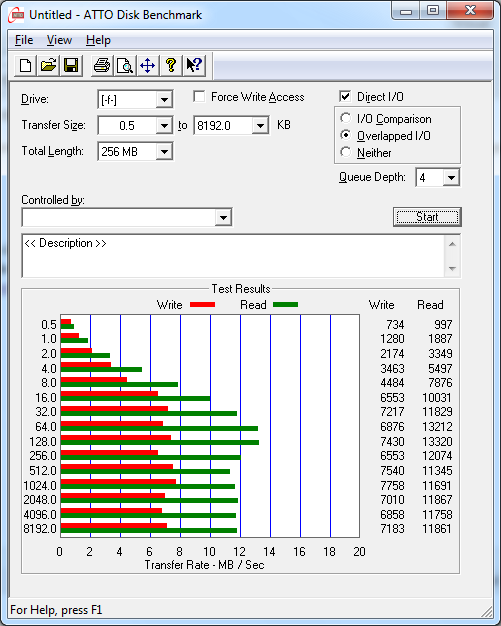Okay, so I know there must be 1k sites out there with this info already but I felt like finding out for myself.
Out of curiosity I wanted to know how fast manufacturer provided the micro SD card in my DROID X phone is. Today I did a test to figure that out.
Procedure:
- Copy contents of sd card to computer
- Reformat SD card using phone. For Droid X, go into settings -> SD card … -> Unmount -> Format
- Connect phone to PC in USB Mass Storage mode
- Download ATTO disk benchmark tool: http://www.attotech.com/products/product.php?sku=Disk_Benchmark
- Select the correct drive and test.
- Copy data back to phone (from step 1)
Results:
You can see that the write speed peaked at about 7.5MB/s and read peaked at just over 13MB/s. These speeds qualify this card as a class 6 card. Not bad considering the card is labeled as class 2. I expected far worse. So, if you are planning to replace this card and want one with at least the same performance buy class 6 or higher. Numerous forum users are reporting that cards higher than class 4 cause problems on the Droid X. I tried a class 10 and had to return it. Now I am using a class 4 with no problems.


